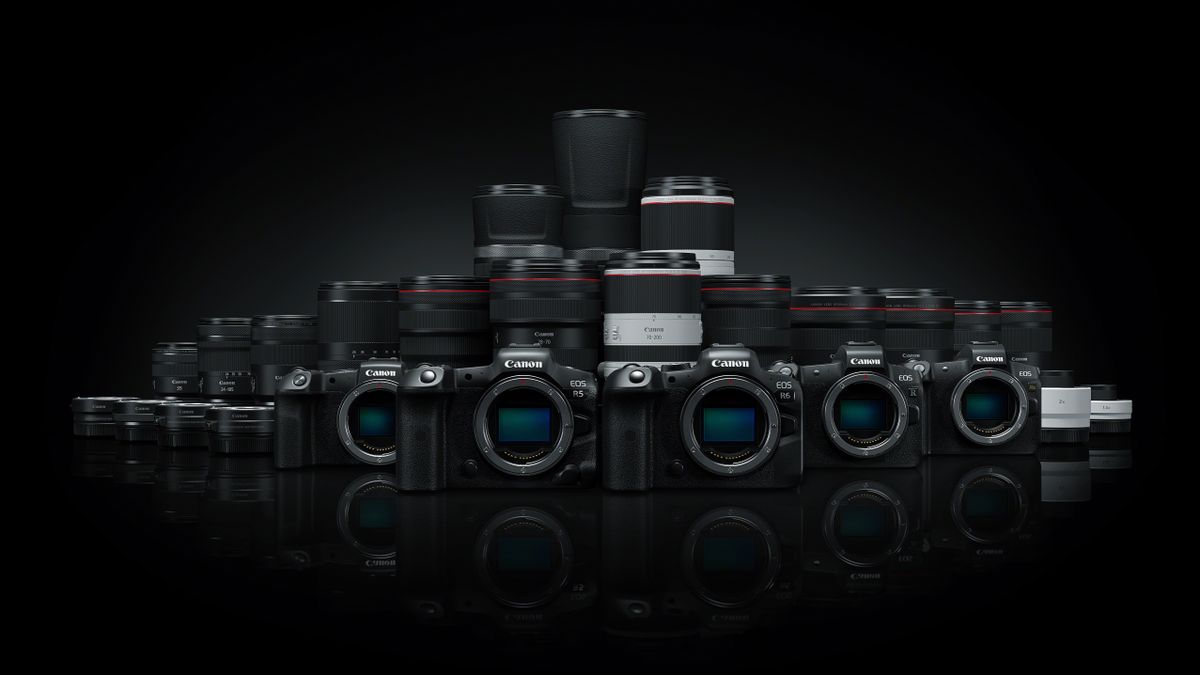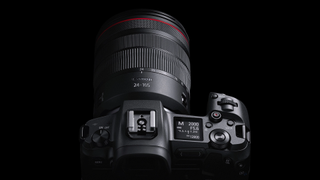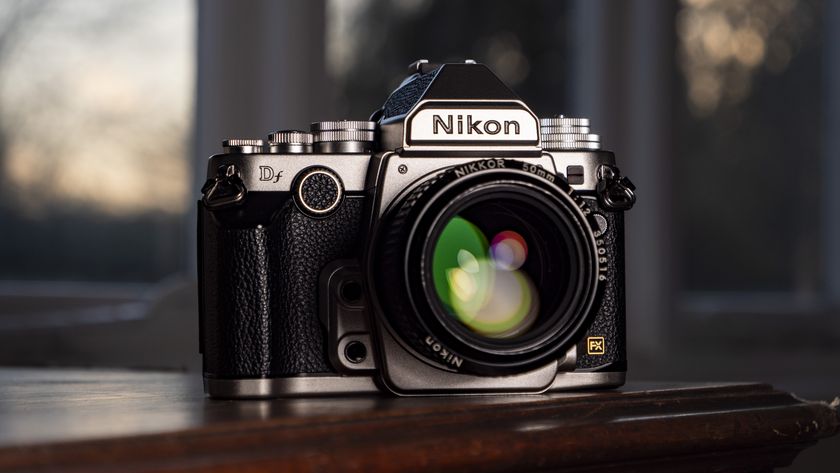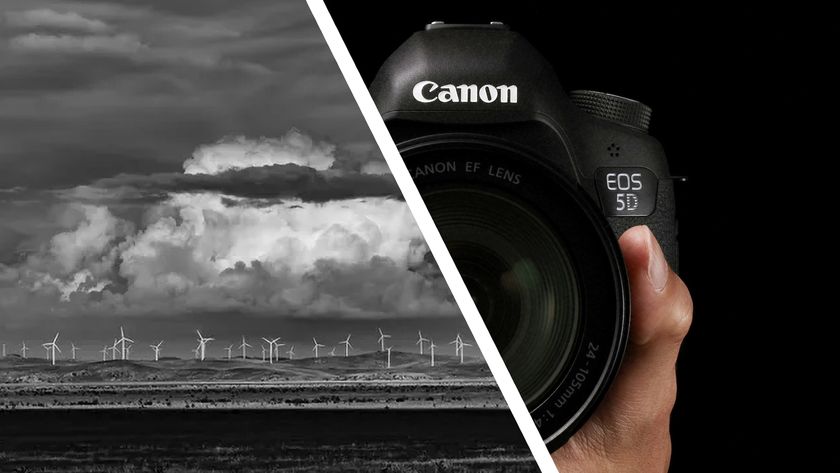Canon explains why the EOS R5 and EOS R6 overheat when shooting video
Canon reveals the reasons behind both cameras' video ceilings

The Canon EOS R5 and EOS R6 have been raking in the plaudits since their launch last week, but Canon has had to douse the hype with a cold splash of reality by confirming that both cameras have 8K and 4K video recording limits.
One of the notable omissions from the design of the EOS R5 and EOS R6 is a built-in cooling fan, and Canon says this decision was made "to maintain the level of weather sealing and retain a compact design".
In an official statement made in response to recent speculation about the video recording limits on both cameras, Canon went on to say that "at the highest frame rates and resolutions, heat is generated because of the best-in-class resolution, frame rate and autofocus capability, which can limit continuous recording times".
- Read our hands-on Canon EOS R5 review
- Why the Canon EOS R5 is a landmark video camera, but overkill for most people
- Or check out our hands-on Canon EOS R6 review
Feeling the heat
In its statement, Canon added that "several steps have been taken to manage this; magnesium alloy is used in the body to dissipate heat away from internal components and there is an ‘overheat control’ function to reduce heat generation when the camera is in standby".
But despite these additions, there are some fairly strict video recording limits on both cameras, which Canon has now officially confirmed.
As you can see in the tables below, the slight disappoint is that the Canon EOS R5 can only shoot 4K/60p or oversampled 4K/30p video for around half an hour before overheating and demands a "recovery time".
| Resolution/frame-rate | Max recording time at 23°C | Recommended scene |
| 8K/30p | 20 minutes | 8K productions where full-frame mirrorless can be used alongside a main camera. |
| 4K/120p | 15 minutes | Shorter bursts of slow motion. |
| 4K/60p | 35 minutes | High frame rate high resolution productions and independent films. |
| 4K/30p | Not limited by heat | Interviews, longer duration capture such as weddings. |
| 4K/30p (8.2K oversampled) | 30 minutes | When additional resolution is required with a 4K30p production. |
These "recovery times" are also pretty significant, particularly for those looking to use the Canon EOS R5 in a professional setting.
Get daily insight, inspiration and deals in your inbox
Sign up for breaking news, reviews, opinion, top tech deals, and more.
According to Canon, when shooting 8K/30p a 10-minute rest will then give you only three minutes of recording time, while letting it cool for an additional 20 minutes will give you an extra eight minutes of recording.
Hitting the limits
If you're shooting in 4K/60p on the EOS R5, a 10-minute rest will give you another 10 minutes of recording time. So for both of the EOS R5's most demanding modes, it'd be wise to shoot in relatively short bursts.
This was to be expected for 8K, though it's slightly disappointing that 4K is also affected given that rivals like the Panasonic GH5 have unlimited recording. That said, Canon has also provided suggested use cases for each mode in the table above, showing that the EOS R5 is very much a tool for specific jobs rather than a main camera.
What about the Canon EOS R6? That camera is less video-focused than the EOS R5, but still has powerful features like 4K/60p recording and in-body image stabilization. You can see its recording limits in the table below.
| Resolution/frame-rate | Max recording time at 23°C | Recommended scenes. |
| 4K/60p | 30 minutes | Independent films shooting action or with the option of slow motion at high resolution. |
| 4K/30p | 40 minutes | General purpose. |
As expected, given it has the same body as the EOS R5, the EOS R6 is also limited to around half an hour when shooting 4K/60p. Canon says that if you give it a ten-minute rest after this, you can carry on shooting for around five minutes.

What does this mean?
So what does this mean for the Canon EOS R5 and EOS R6 as video cameras? The most obvious conclusion is that they've naturally been unable to defy the laws of physics.
While other cameras like the Panasonic GH5 do offer unlimited recording times in 4K, they also have smaller sensors than Canon's new full-frame models. Adding a built-in fan to the EOS R5 and EOS R6 would have made them DSLR-sized, which negates some of the benefits of going mirrorless, and the overheating issues are also a slightly inevitable side effect of additional features like Dual Pixel AF.
It certainly would have been nice to see Canon produce one camera to rule them all, but all this really means in reality is that both the EOS R5 and EOS R6 are tools for particular jobs.
Looking to do lots of continuous shooting? Both can still do this at 4K/30p, it's just that they also have higher frame-rates and resolutions available for gathering short clips in different scenarios.
As always, the truth will be in the testing, which is something we'll be doing very soon with both the Canon EOS R5 and EOS R6, so look out for our full verdicts in the very near future.
- These are the best cameras you can buy right now

Mark is TechRadar's Senior news editor. Having worked in tech journalism for a ludicrous 17 years, Mark is now attempting to break the world record for the number of camera bags hoarded by one person. He was previously Cameras Editor at both TechRadar and Trusted Reviews, Acting editor on Stuff.tv, as well as Features editor and Reviews editor on Stuff magazine. As a freelancer, he's contributed to titles including The Sunday Times, FourFourTwo and Arena. And in a former life, he also won The Daily Telegraph's Young Sportswriter of the Year. But that was before he discovered the strange joys of getting up at 4am for a photo shoot in London's Square Mile.
Most Popular





